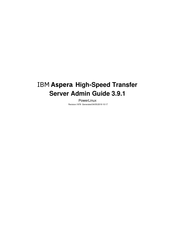User Manuals: IBM Aspera HST Speed Transfer Server
Manuals and User Guides for IBM Aspera HST Speed Transfer Server. We have 1 IBM Aspera HST Speed Transfer Server manual available for free PDF download: Admin Manual
Advertisement
Advertisement
